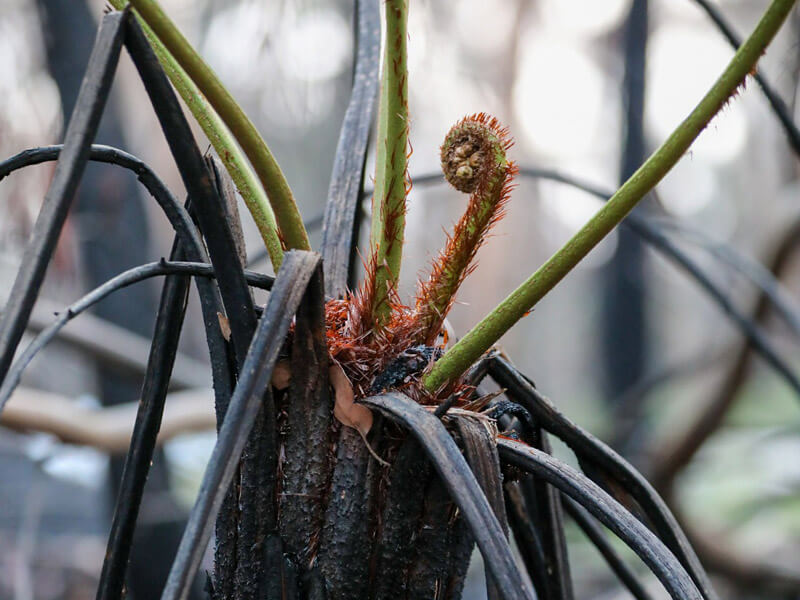
Image credit: DELWP
Rainforest ecosystems are at risk of being greatly reduced Victoria through the impacts of fire, weeds and introduced herbivores.
Thirty per cent of Victoria’s rare or threatened plant species live in rainforests. Some of the last remaining pockets of littoral (coastal) rainforest, covering about 100 hectares on the coast of eastern Victoria, were badly affected by the 2019/20 bushfires.
This work is part of Victoria’s $54.5 million Bushfire Biodiversity Response and Recovery Program.
Rainforest ecosystems
- Cool and warm temperate rainforest ecosystems are threatened in Victoria, and Littoral rainforest ecosystems are critically endangered.
- Rainforests generally occur in areas with higher rainfall and sheltered gullies that naturally exclude fire.
- 45% of Victoria’s rainforests burned in the 2019/20 fires.
- Threatened by weed invasion, introduced herbivore activity, frequent fire, eucalypt invasion, soil erosion, habitat fragmentation and climate change.
- Rainforests are established in the long-term absence of disturbance such as fire. Many rainforest plants struggle to recover from intense and/or repeated bushfire.
- Rainforests are vulnerable to introduced herbivores and weed invasion immediately after fire.
What we did
The Arthur Rylah Institute for Environmental Research (ARI) surveyed 13 burnt rainforest sites between Orbost and Mallacoota to determine fire impacts, recovery state and major risks post-fire.
In response, DELWP Gippsland, Trust for Nature and Parks Victoria have performed introduced large herbivore control (deer, feral goats, feral pigs) and weed control work, and built deer exclusion fencing across more than 6,500 hectares of fire-affected rainforest across East Gippsland.
What we found
The rate and scale of rainforest vegetation recovery, for canopy and understorey, was closely associated with the severity of fire.
Fewer weeds and introduced animals were observed in burnt areas.
Without our control efforts, numbers of introduced animals and weeds will increase, reducing or even preventing successful rainforest regeneration.
Fairy Dell Rainforest
Site of Significance
- Before the 2019/20 bushfires, deer damage was affecting which types of plants could grow.
- Deer control after the fires is allowing rainforest species to regenerate.
What we’re doing now
- We’re continuing weed and introduced herbivore control in rainforest areas across East Gippsland.
- We’re fencing fragile ecosystems and removing introduced animals and weeds to increase resilience.
- We’re monitoring rainforest sites to see how introduced herbivore and weed locations and abundance change post-fire and in response to control measures.
- We’re also intensifying our management efforts in remaining unburnt areas to protect insurance populations across Victoria.
How you can help
Join a local landcare or community group and help rehabilitate your local environment.
Get involved in your local Gardens for Wildlife program.
Help protect more land with conservation covenants via Trust for Nature.
Make sure your car, shoes and camping equipment are cleaned before and after entering a rainforest site to prevent spread of weeds.
Project Partners
Page last updated: 14/09/21